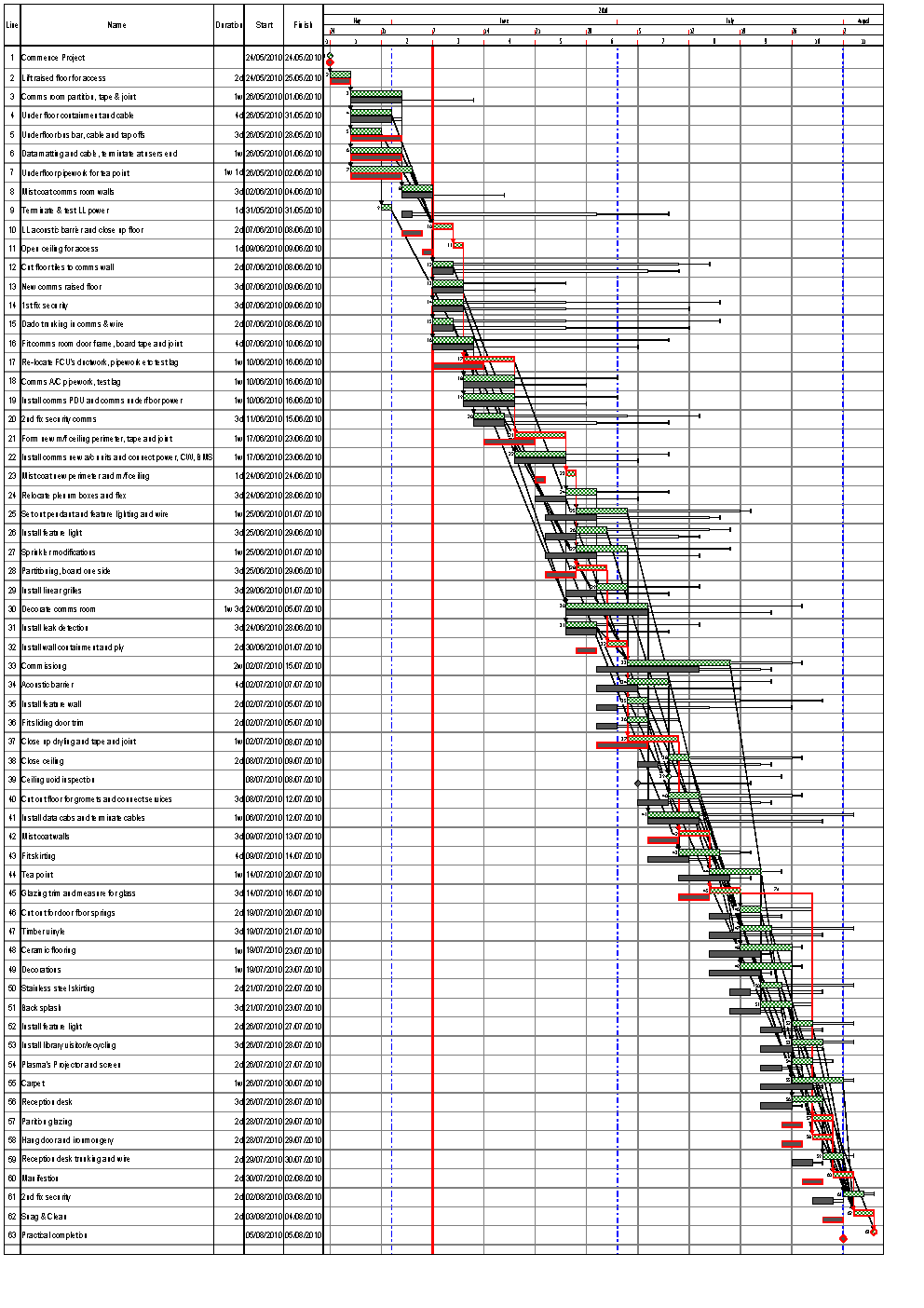The most effective method of progress reporting is with a baseline programme. Basically, the software slices along its length each task in half with one half becoming fixed and cannot be altered and the remaining half adjusted to represent progress. With this method of reporting the project manager can demonstrate the following:
- Show the tasks actual start and finish dates.
- The effect the progress is having on future tasks. This can only be shown if the tasks are linked.
- How much float remains to non critical tasks.
- The effect the delay is having to the critical path.
- The new route that the critical path should all the float be used with non critical tasks.
- The project manager can also forecast ‘what if’ scenarios and the effect proposed changes or expected delays will have on the overall programme.
In the example below the baseline tasks are the thinner grey bars which are fixed. The other bars are be moved to actual start and finish times. You see that item 5 finished two days early, item 7 finished one day late and item 10 started three days late. In fact, item 10 is a critical task and is delaying the remaining programme by 4 days. As you can appreciate this form of reporting is far superior than the drop down type with the information provided.




